Protecting the Environment
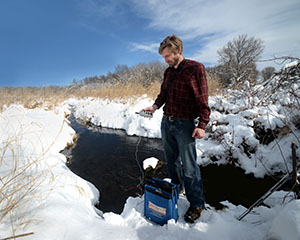
Our employees monitor water quality in our rivers and streams, test water samples in our laboratory, plan for our future wastewater supply, and much more. In 2022, we replaced 4.2 miles of sewer pipe across the region – the same distance as 185 football fields – to maintain the integrity of the interceptor system and protect the lands and surface water above. By investing in our wastewater treatment plants, regional interceptor systems, and local communities, we help to ensure clean water for years to come.
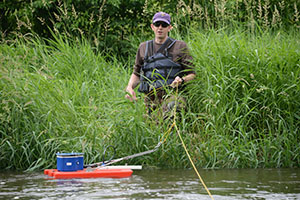 Monitoring chloride trends in local rivers and streams
Monitoring chloride trends in local rivers and streams
Chloride pollution is a growing concern in Minnesota’s waterbodies. Stemming from sources such as de-icing salt, synthetic fertilizer, and household water softening products, chloride pollution is harmful to aquatic life. Once in the water, chloride is almost impossible to remove.
Environmental Services has been monitoring chloride in regional streams and tributary rivers for more than 20 years. To help our partners better understand chloride trends — and how to address chloride pollution — we published an expansive report that examines 18 local rivers and streams, revealing that nearly all the streams had rising chloride levels. But excess chloride transcends local streams. Currently, a total of 42 Twin Cities waterbodies, which include lakes, rivers, and streams, are contaminated with excess chloride levels.
“The study is a great start. We hope to use its findings to learn even more about our regional waterbodies,” said Judy Sventek, manager of water resources in the Met Council’s Environmental Services division. “In partnership with local governments in the metro area, we will continue to monitor our waterbodies, and also work with them to reduce the amount of chloride and its impacts.”
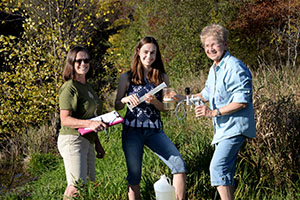 Assessing regional water quality with the Citizen-Assisted Monitoring Program
Assessing regional water quality with the Citizen-Assisted Monitoring Program
The Met Council and our partners maintain the Citizen-Assisted Monitoring Program (CAMP) to assess and monitor the water quality across the region. The primary goals of CAMP are to assess, protect, and improve water quality, and to quantify the impacts of point and nonpoint sources of pollution.
CAMP celebrated 30 years in 2022, with 107 citizen volunteers participating in the program. Each volunteer monitors a specific site on a lake on a regular basis from mid-April through mid-October. Volunteers collect surface water samples, measure water temperature and clarity, and report weather and lake conditions. Environmental Services analyzes the samples, reviews and analyzes data, and assesses and reports on current lake conditions. Our dedicated volunteers and local partners monitored a total of 170 sites on 159 lakes in 2022.
CAMP sponsors stress the value of the program. “The data produced through the program is invaluable. It provides a way to share scientific data on the health of our waterbodies with the public, in a way that is relatable to those not in the water resources field,” said Krista Spreiter, natural resources coordinator in Mendota Heights. “It is also useful, as a water resources professional, to be able to see trends and how land use or single events may affect a waterbody.”
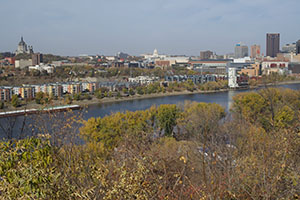 Ensuring sustainable water resources with the 2050 Water Resources Policy Plan
Ensuring sustainable water resources with the 2050 Water Resources Policy Plan
We are updating the 2040 Water Resources Policy Plan, which integrates planning for wastewater services, water supply, and surface water management to ensure sustainable water resources in the region. In 2022, we continued working with an advisory group that includes watershed administrators, public works directors, city engineers, and others involved in water resource management. The advisory group consulted with our staff to identify key issues and develop the direction for the 2050 Water Resources Policy Plan, as well as associated outreach activities. The Water Resources Policy Plan includes the Wastewater System Plan, which is one of four system plans the Met Council is required under state law to develop and update to ensure the orderly economic growth of the region.
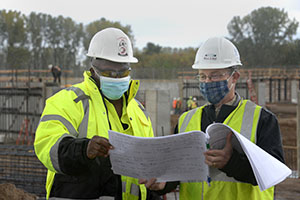 Maintaining sustainable infrastructure through capital improvement projects
Maintaining sustainable infrastructure through capital improvement projects
We contribute reliable, affordable wastewater infrastructure that provides long-term value to the region. To meet current and future infrastructure needs, we make investments through our capital program. The capital program is prepared, reviewed, and approved annually, and adjusted as needed. Capital expenditures totaled about $120 million in 2022.
Capital project details:
- 60% renew aging infrastructure
- 21% upgrade infrastructure to meet increasing permit regulations
- 19% expand system capacity through plant expansions and interceptor extensions
We completed capital projects at all nine of our wastewater treatment plants in 2022. These projects included modifying pipes to increase inflow, replacing obsolete electrical equipment, expanding treatment facilities, and more. We also completed sewer construction projects in 21 cities. These projects included rehabilitating existing interceptor infrastructure – including gravity sewers and force mains (pressurized sewers) – and analyzing the systems’ needs to accommodate growth.
Repairing or replacing aging infrastructure is one of the key ways we ensure water can be collected and treated safely and efficiently. When wastewater infrastructure begins to age and show signs of wear, it introduces the possibility of inefficiency or even operational failure. Our staff inspect interceptor pipes on a recurring schedule ranging from 1 to 15 years, depending on the material of the pipe. When a pipe fails and a spill occurs, our staff is quick to respond and begin coordinating spill containment and correction – with a response time of 10-30 minutes during weekday working hours and 10-60 minutes after hours.
Similarly, making upgrades to meet or exceed permit regulations allows us to operate and plan with confidence as we work towards clean water for future generations. As we expand system capacity, we increase our ability to serve the metro region and extend the promise of clean water to even more residents and businesses.
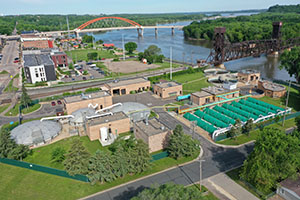 Planning for relocation of the Hastings Plant
Planning for relocation of the Hastings Plant
Environmental Services plans to relocate the Hastings Wastewater Treatment Plant about two miles southeast of its existing location. The existing site, located in downtown Hastings along the Mississippi River, cannot be expanded to meet long-term growth or future regulatory requirements.
The City of Hastings opened the current plant in 1955, and we acquired it in 1970. For the last 30 years, we have achieved full compliance with its federal clean water discharge permits – one of the best records in the nation. The new plant will be constructed to treat 3 million gallons of wastewater daily with the ability to expand to 10 million gallons of wastewater daily, allowing for significant regional growth over today’s 2.34-million-gallon daily capacity. The plant is projected to open in 2027.